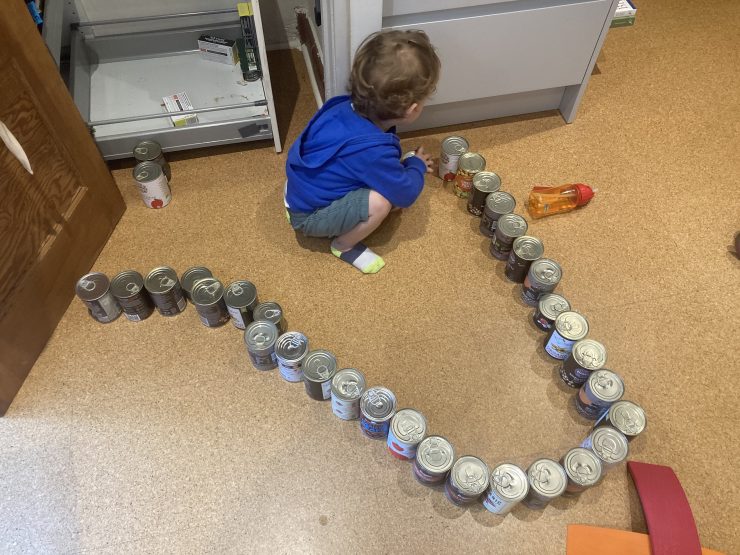Exploring maths in the early years of childhood and discovering maths is everywhere!
What’s the equivalent of a bedtime story, for maths? Numeracy seems to play out differently from literacy in children’s daily lives – and mealtimes, rather than bedtime, can be a great way to have some gentle fun with maths from a very early age. Welcome to a series of four Mealtime Maths stories from Maths on Toast founder, Alexandra Fitzsimmons.
Emptying the kitchen cupboards: packing, stacking and sorting
Emptying cupboards – hmm, who doesn’t like doing that?
This picture shows the (excessive?) amount of canned food in my low-level kitchen cupboard, being arranged in a line and counted by my (then) two year old.
The thing is, the contents of cupboards are inherently interesting. Different shaped objects. Some you can pile on top of each other to make towers. Some you can put inside each other. Some hard, some less so. Some that roll. Some that make noises when you shake them.
Many of these properties are mathematical, so even exploring the objects is doing something for your (child’s) mathematical brain. That’s before they start trying to count them and to sort them and to move them around. Counting is obviously maths, but sorting may be less obviously so. It’s maths because sorting is about creating categories – and categories are what allow us to think about number.
We’ve done towers, and we’ve done rolling. Today we are on counting, and I reckon we’ll also get to:
- Arranging the cans to make different shapes (squares, circles, etc)
- Sorting them out – how many chickpeas? How many tinned tomatoes?
- Adding those up, exploring the number of different sorts of can and those relationships
- Putting them all back in the cupboard (if I’m lucky!) – exploring the way the shapes stack together, working out how to pack them efficiently
- Talking about shape – these are cylinders; the cupboards also hold cuboids, cubes, and many other shapes
- Maybe even helping with a shopping list!

